Discover top guides, trends, tips and expertise from AIO Writers
7 Impactful Ecommerce Content Marketing Case Studies
Julia McCoy
Thursday, 20th Jul 2023
When it comes to content marketing for ecommerce, not all journeys are the same. Some can lead to success, while others may leave you in despair.
If you’re a content marketer looking for new ideas and strategies, it’s worth exploring some ecommerce content marketing case studies. These provide valuable insights into how companies have excelled in this field and achieved significant success.
In this blog post, we’ll share with you 7 ecommerce content marketing case studies that provide insights into what works (and what doesn’t) in this competitive space.
You’ll learn about MeUndies’ backlink builder strategy that skyrocketed their SEO rankings, and Beardbrand’s informative guides that guided customers down the sales funnel with ease.
We’ll also discover how companies effectively use email marketing for cart recovery, leverage customer reviews for trust building, create irresistible unboxing experiences, and turn one-time shoppers into repeat customers.
Table Of Contents:
- 7 Impactful Ecommerce Content Marketing Case Studies
- Specific Use Cases of E-commerce Content Marketing
- Conclusion
7 Impactful E-commerce Content Marketing Case Studies
In the crowded market of e-commerce, effective content marketing strategies are essential to stand out and attract potential customers.
Let’s delve into 7 impactful e-commerce content marketing case studies that showcase successful tactics in this arena.
1. Fractl – Mapping Marvel Origins
One standout example is Fractl’s Mapping Marvel Origins campaign for Movoto Real Estate. This creative project leveraged popular culture by connecting iconic comic characters from Marvel Comics with real-world locations. The result was a visually engaging infographic that appealed not only to comic book fans but also showcased Movoto’s core business – real estate.
This strategy resulted in over 9,000 shares and coverage on major media outlets such as Yahoo, MTV, Mashable, and Nerdist — an excellent demonstration of how creating content can boost brand awareness while simultaneously promoting your product or service.
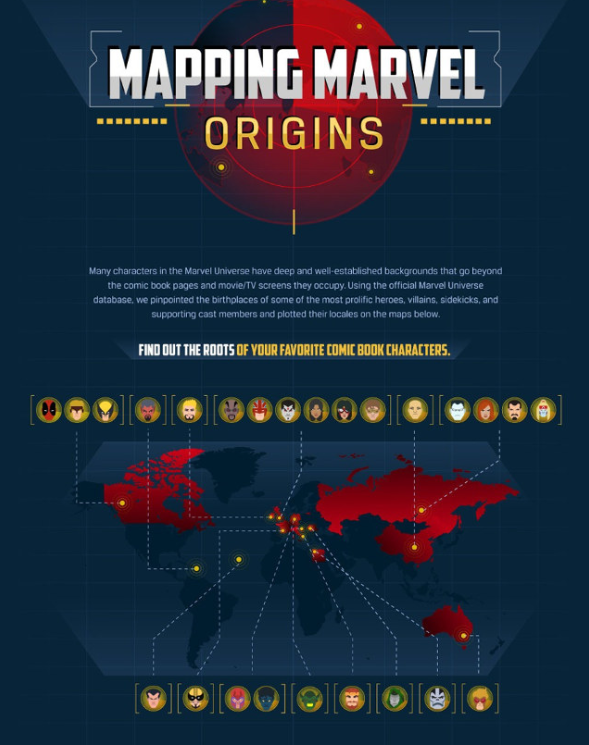

Screenshot from Fractl
2. Recovery.org – Average Faces of Drug Abuse Campaign
An equally compelling case study comes from Recovery.org’s Average Faces of Drug Abuse campaign. More than just blog posts or email marketing messages, this campaign used powerful visuals to expose the dangers of drug abuse through curated mugshots turned into composite images.
The emotionally stirring visual content combined with educational information drew readers’ attention effectively — showcasing how well-executed graphics can enhance a message far beyond text alone.


Source: Recovery.org
These examples underscore the importance not only of creating valuable content but also using it strategically within your online store’s SEO space — be it through infographics on product pages or leveraging user-generated content for increased organic traffic.
3. Lush
When it comes to effective content marketing, the beauty and cosmetics ecommerce business Lush stands out in a crowded market. Their success is largely due to their unique approach to creating content that resonates with their target audience.
Lush’s primary platform for disseminating valuable content is its YouTube channel, which has over 170K subscribers. They use this platform not only as an online store selling products but also as a means of engaging with potential customers on a more personal level.
Creating Engaging Video Content
The company creates compelling videos showcasing how its products are made, sharing behind-the-scenes footage from factories and farms where ingredients are sourced. This transparency fosters trust among existing customers while attracting new ones by offering them insights into the brand’s ethical sourcing practices and product quality.


Screenshot from Lush’s YouTube channel
Driving Organic Traffic through SEO Strategies
In addition to video creation, Lush understands the importance of search engine optimization (SEO) in driving organic traffic to its website. The team ensures all product pages are optimized for Google Shopping listings and other search engines so that they rank high when users search for related keywords.
Influencer Marketing & User-Generated Content
Beyond videos and SEO strategies, Lush leverages influencer marketing campaigns effectively too – partnering with influencers who align well with their brand values helps increase reach amongst different demographics within the target market.
Moreover, user-generated content plays a significant role in building brand awareness; encouraging customers to share photos or reviews of purchased items provides authentic testimonials that can be featured across their platforms.


Screenshot from Lush’s Instagram
4. Airbnb
When it comes to effective content marketing case studies, Airbnb is a standout example. The company has managed to transform its e-commerce site into an experience-sharing platform that resonates with its target market.
Leveraging User-Generated Content
Influencer marketing and user-generated content are two strategies at the heart of Airbnb’s success. They encourage their existing customers and hosts to share unique stories about their experiences using the hashtag #AirbnbExperiences on Instagram. This strategy not only creates valuable content but also builds brand awareness in a crowded market by showcasing real-life experiences from different perspectives around the world.


Screenshot from Airbnb’s Instagram
Email Marketing for Repeat Customers
Airbnb understands that email marketing is key to nurturing potential customers through the buyer’s journey. By creating content centered around personalized recommendations, travel guides, and host tips, they provide value while subtly promoting their listings. This approach leads to repeat customers who appreciate being part of Airbnb’s community rather than just another online store selling products.
Social Media as a Key Player in Their Strategy
Beyond Instagram, Airbnb uses other social media platforms like Facebook for paid ads as well as organic traffic generation. They create engaging blog posts highlighting popular destinations or unique homes available on their platform which are then shared across various channels – increasing visibility and driving more visitors back to product pages on their website.
5. Patagonia
In the crowded market of outdoor apparel, Patagonia has managed to carve out a unique space for itself through effective content marketing. The company uses its e-commerce business platform not just for selling products but also as a tool for creating and sharing valuable content that resonates with its target audience.
The Power of Long-Form Content
A key aspect of Patagonia’s e-commerce marketing strategy is long-form blog posts on their website. Unlike many brands that focus solely on product pages and sales funnels, Patagonia understands the importance of guiding potential customers along the buyer’s journey by providing engaging and informative content.


Screenshot from Patagonia Stories
From environmental advocacy articles to adventure stories from athletes who use their gear, these blog posts serve multiple purposes: they improve SEO space, increase organic traffic to the site, build brand awareness among existing customers and new visitors alike. This approach creates an enriching customer experience that goes beyond mere transactions.
6. MeUndies
While the majority of online stores depend on Google search for their natural traffic, only a small number of e-commerce marketers truly understand and value the significance of e-commerce SEO. Furthermore, very few dedicate sufficient time and resources to link building.
Securing backlinks from high-authority websites can significantly enhance the authority of your online store’s domain. This increased authority will give you a competitive edge, allowing you to surpass your rivals in search engine rankings.
Contact reputable domains in your industry and request to be included in their curated lists.
This is what underwear company MeUndies did, and the brand was able to land on Cosmopolitan, Marie Claire, and Business Insider — earning valuable backlinks to boost its Google rankings and attract more organic traffic.


Screenshot from Cosmopolitan
7. Beardbrand
Beardbrand understands that buyers at different stages of the sales funnel have different needs, questions, and concerns. This is why they create informative guides and blog posts that cater to each stage of the buyer’s journey.
This beard care company focuses heavily on educating its target audience about grooming techniques rather than just selling products outright – a strategy that has paid off handsomely by building trust among potential customers while simultaneously boosting sales funnel conversions.
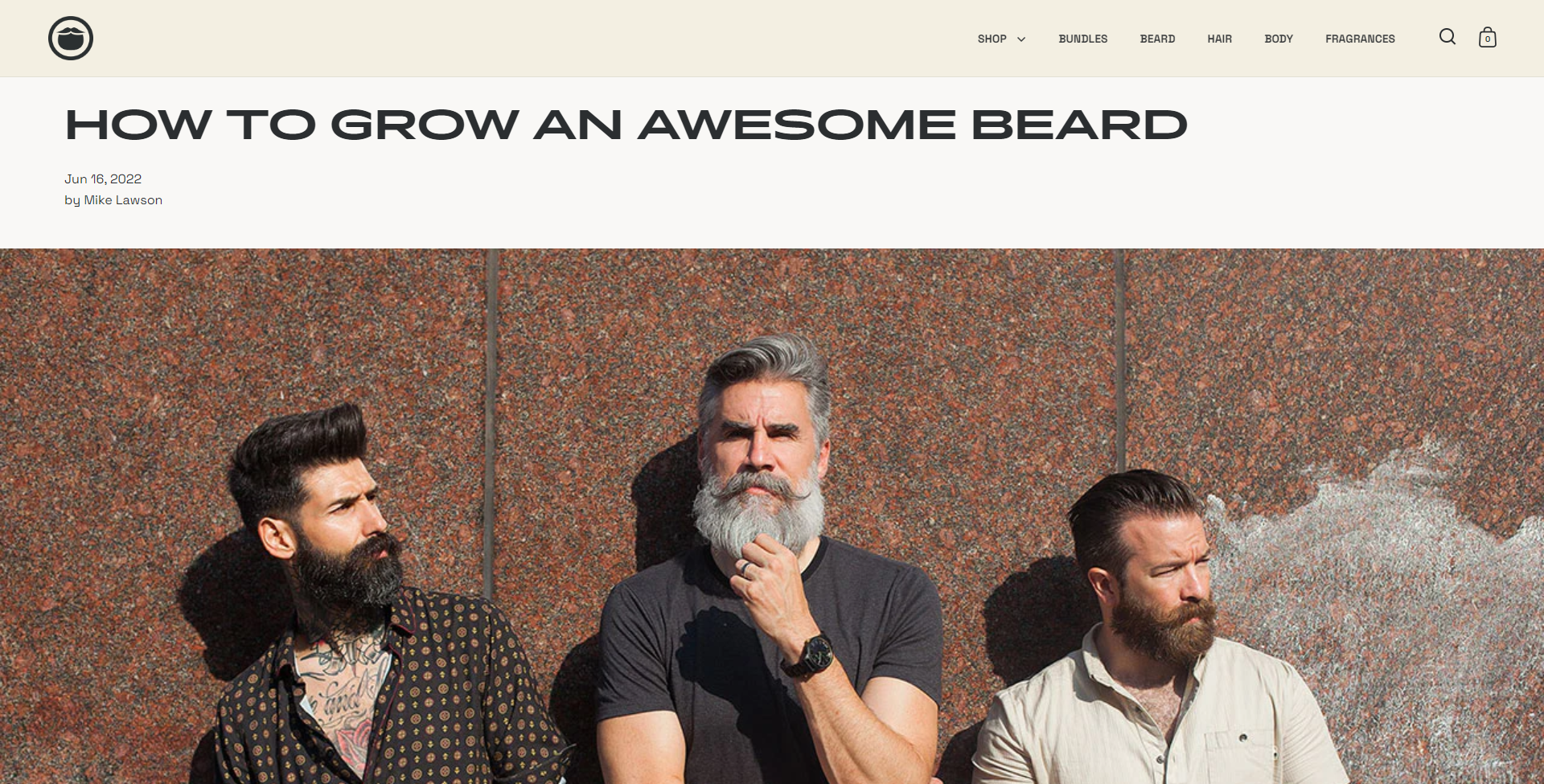

Screenshot from Beardbrand
Specific Use Cases of E-commerce Content Marketing
In this section, we’ll share more e-commerce content marketing case studies that focus on specific techniques like abandoned cart recovery and unboxing.
Harry’s Abandoned Cart Emails
Cart abandonment is common in e-commerce, with a whopping 70% of visitors leaving items in their shopping cart without buying.
But fear not: Email marketing can save the day.
Harry’s, the grooming brand for men, nailed the art of using emails to rescue abandoned carts and boost sales.
Their secret? Personalized emails that upsell and downsell, tempting customers to complete their purchases.
Harry’s even built a massive email list pre-launch by offering referral incentives.
When it comes to cart recovery, downselling is a winner — this just means you offer a lower-priced alternative or a discount on the abandoned product to entice hesitant customers to buy.
Not only does this give customers a reason to purchase, but it also shows you care about their budget constraints.
On the flip side, upselling is all about getting customers to upgrade or add more items to their cart before checkout.
It’s a chance to provide maximum value and maximize revenue. Cha-ching!
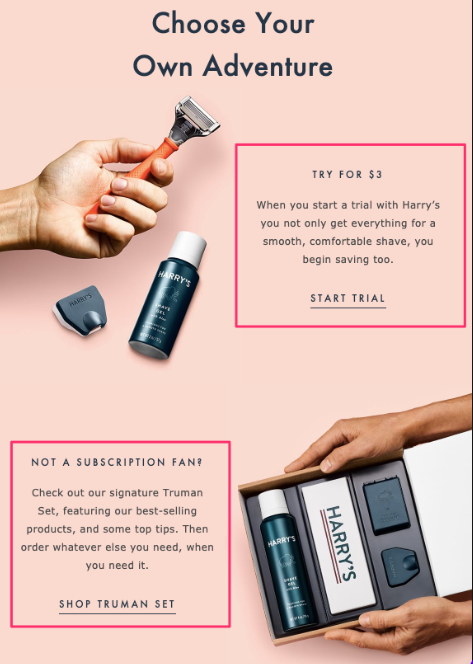

Screenshot from Harry’s
When creating abandoned cart emails:
- Create catchy subject lines that make users curious or highlight clear benefits.
- Send reminders about abandoned products to trigger FOMO (Fear Of Missing Out) and push customers to buy.
- A/B test different approaches like sending immediate follow-up emails versus waiting 24 hours.
- Add personalization whenever possible — addressing recipients by name makes them feel special.
Casper’s Customer Testimonials
In contrast with many companies who solicit generic five-star reviews, Casper encourages its customers to share specific experiences with their mattresses by asking how well they slept in them or how much better sleep quality they have experienced since switching over.
Surely you’ve seen those product pages filled with generic “great product” responses without any real substance behind them. They’re hardly convincing, right?
Look at how Casper gets its customers to elaborate on their experience:
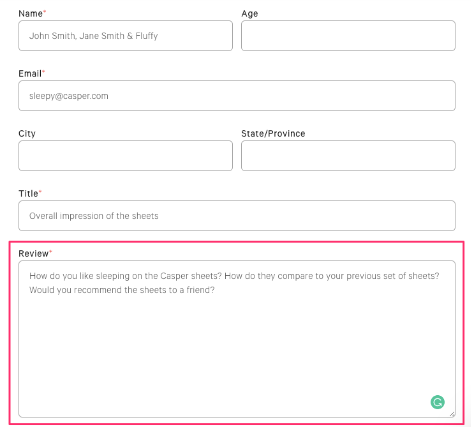

Casper urges customers to answer a specific set of questions instead of just leaving the form open-ended. This makes it more convenient for customers to write their responses.
Irresistible Unboxing Experience with Man Crates
It’s not unusual for an unboxing channel on YouTube to have over 10 million subscribers. People love unboxing videos — so much so, they’re a common video topic that most people have heard of (or watched at least one).
For consumers, unboxing videos provide a “getting-started” tutorial for a product they bought, or a detailed overview of an item they’re interested in. And for marketers, these mean social proof and a wider reach.
Man Crates has found its unique selling point in the form of an unboxing experience that’s nothing short of theatrical.
And no, we’re not talking about your regular brown box with bubble wrap and packing peanuts.
We’re talking about crates. Wooden ones. With crowbars to open them up.
In the crowded market of online stores, Man Crates has created content around their packaging which is as much part of the product as what’s inside it.
This novel approach adds value to their products while also serving as a marketing strategy in its own right.
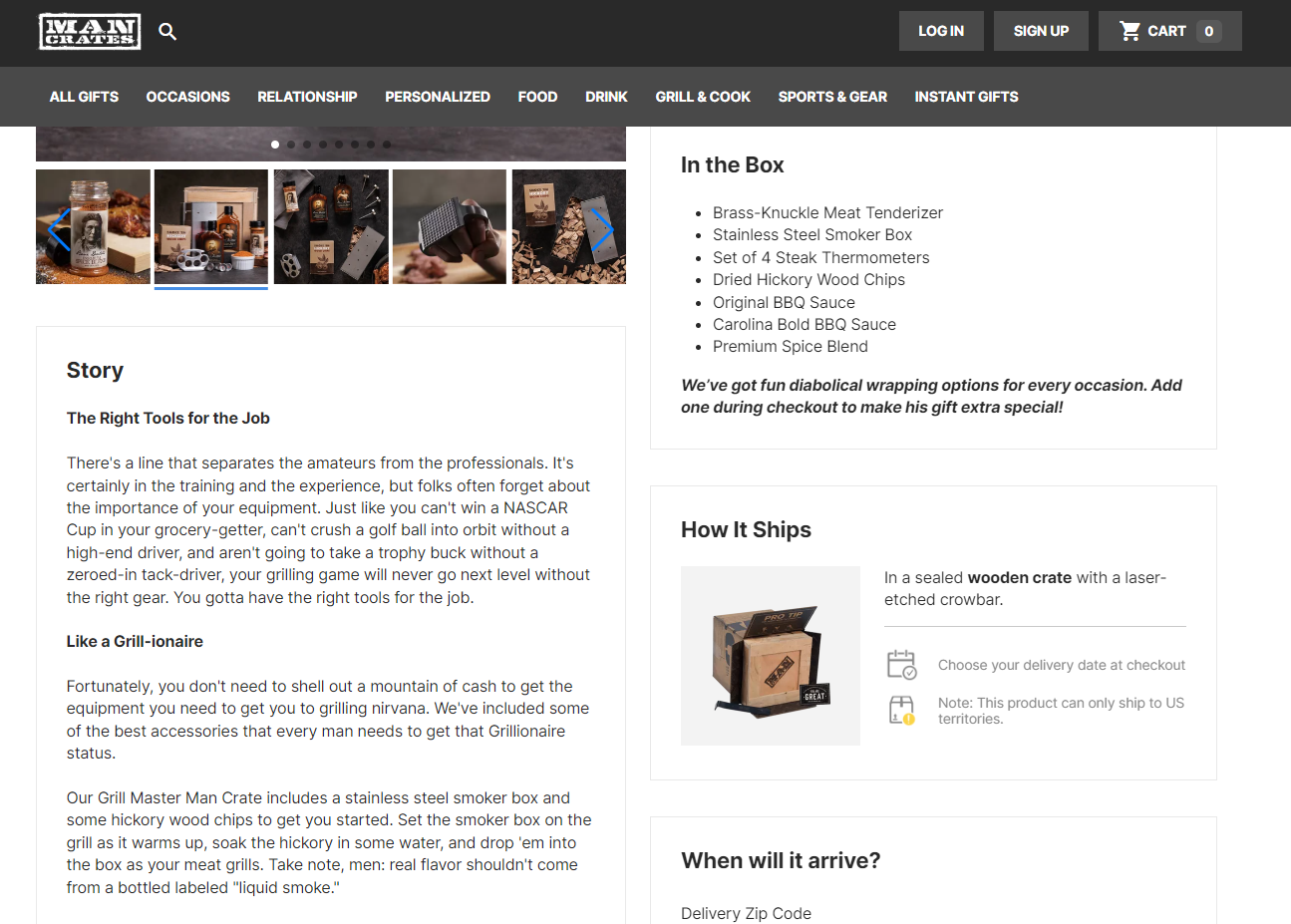

Screenshot from Man Crates
Now here comes the ingenious part: they encourage customers to record these unboxing moments and share them on social media platforms using specific hashtags.
This user-generated content serves multiple purposes:
- It creates brand awareness among potential customers who see these posts.
- It enhances customer engagement by encouraging interaction.
- It provides valuable content for future marketing campaigns without any ad spend.


So if you’re looking for ways to stand out in this competitive e-commerce world, take inspiration from Man Crates.
Look beyond your product pages; think about how you can create engaging experiences even after the sales funnel ends.
Remember, every aspect of your customer experience counts when building brand loyalty.
Sunski’s Loyalty Program: More Than Just Rewards
Sunski, a popular sunglasses brand, has mastered the art of turning one-time shoppers into repeat buyers.
Their secret weapon? A robust customer loyalty program that encourages and rewards repeat purchases from existing customers.
This isn’t just about offering discounts or freebies. It’s about providing a stimulating experience that motivates customers to keep returning.
Customer loyalty programs are proven to increase overall revenue by 5% to 10%, as repeat customers tend to spend up to 67% more than new ones.
Sunski takes its loyalty program a step further by incorporating referral marketing strategies. This not only helps retain existing customers but also attracts potential new ones through word-of-mouth advertising.
In this strategy, current members earn credit when they refer friends who make a purchase. The referred friend also gets a $10 discount on their first order — it’s a win-win.


Screenshot from Sunski
Social proof, like testimonials and reviews from satisfied customers, is another effective content marketing tool used by Sunski. They showcase these on their website and social media platforms, enhancing credibility among potential buyers while promoting their products organically without any ad spend required.
From blog posts about the latest trends in sunglasses to informative guides on choosing the right pair, Sunski consistently creates valuable content tailored to their audience’s interests and needs. This not only drives organic traffic but also positions them as an authority in the sunglass industry.
Conclusion
These ecommerce content marketing case studies have shown us how the right strategy can be a game changer for online stores. It attracts potential customers, boosts organic traffic, and increases brand visibility.
Take a look at Bellroy’s persuasive copywriting, MeUndies’ backlink builder strategy, and Beardbrand’s informative guides — they prove the power of valuable content in driving customer engagement and conversions.
But that’s not all! E-commerce businesses can also use email marketing for cart recovery, leverage customer reviews for trust building, and create an irresistible unboxing experience. These tactics can help businesses stand out in a crowded market and reach their target audience.

UNLOCK YOUR POTENTIAL
Long Headline that highlights Value Proposition of Lead Magnet
Grab a front row seat to our video masterclasses, interviews, case studies, tutorials, and guides.



